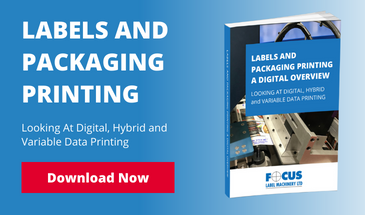Flexible packaging solutions play a crucial role in various industries, offering a convenient and cost-effective way to protect and preserve products and ensure their freshness and quality. Flexible packaging is lightweight, customisable, and environmentally friendly, making it the preferred choice for manufacturers and consumers alike.
Choosing the right printing method for your flexible packaging is crucial to achieve the visually appealing and high-quality results that your customer requires. Among the various options available, gravure printing stands out as a preferred choice for many packaging applications. In this article, we’ll explore why gravure printing could be the ideal choice for your flexible packaging needs.
What Is Gravure Printing And What Is Involved In The Printing Process?
Gravure printing utilises a cylindrical printing plate that is engraved with tiny cells or dots. The plate is inked, and then the excess ink is wiped off the surface, leaving ink only in the cells. The substrate, usually a smooth surface such as plastic film, is pressed against the cylinder, and the ink is transferred from the cells to the substrate under pressure.
To create intricate details or shading in the printed image, the size and depth of the cells can be precisely controlled which is particularly beneficial for packaging that requires fine graphics, sharp text, and lifelike images. Gravure printing can capture the smallest details and reproduce them faithfully, ensuring a visually striking final product.
However, these specialist engraved Cylinders are expensive to produce, so quantity is an important factor in choosing Gravure. Typical applications are Snack Foods, Alcohol, Drinks , Tobacco packing, Tablet blister packaging & pharma products.
Is Gravure Printing Right For My Needs?
With many different printing methods available, choosing the one that suits your needs most thoroughly can be challenging, so it’s wise to understand the differences between, for example, flexo and gravure printing. So, what are the advantages – and limitations – of gravure printing?
-
Versatility: Gravure printing can accommodate a wide range of inks, including solvents, metallic, and fluorescent inks. By leveraging these ink options, the visual impact of the printed graphics can be enhanced to make the packaging stand out. The ability to use different ink formulations adds a layer of creativity and customisation to the packaging design process that isn’t available with some printing methods.
-
Registration Accuracy: Gravure printing delivers exceptional registration accuracy - the precise alignment of different colours on the printed image. This results in clean and sharp graphics which is beneficial for complex designs that require multiple colours or intricate patterns. Also, it ensures that each colour is perfectly aligned to create an aesthetically-pleasing and professional package.
-
Suitability: Gravure printing is well-suited for printing on substrates with smooth surfaces, such as plastic films, which allow for excellent ink transfer and deliver crisp and vibrant prints. This makes gravure printing an ideal choice for flexible packaging commonly used in the food, pharmaceutical, and consumer goods industries.
However, it’s worth noting that gravure printing has its limitations. One factor to consider is the cost of gravure cylinders, which restricts its use to high-volume print runs. This makes it more suitable for large-scale packaging projects, such as those found in the packaging, medical, and tobacco industries. For smaller-scale or customised packaging runs, alternative printing methods may be more cost-efficient.
Contact Us For Expert Printing Advice
With many different printing methods available, it can be confusing knowing which is best suited to your needs. At Focus Label, we can provide you with expert advice to help you to make an informed and costed decision so, to find out more, simply call us on 01949 836223 or send our expert team a message.







